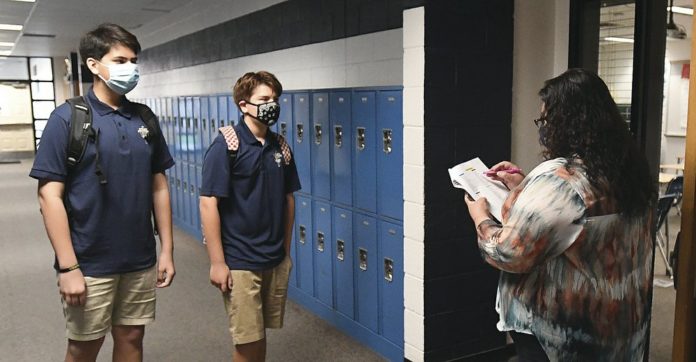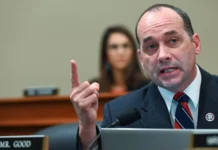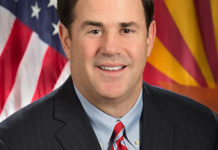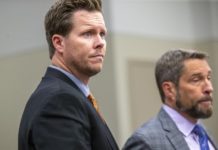
Arizona’s top health official and the state’s education chief laid out a series of guidelines Thursday that public schools were urged to use when deciding whether coronavirus infection rates are low enough to safely reopen for full in-person learning.
The officials, however, said parents should not expect to see a return to normal at their child’s school anytime soon.
“We think it is going to be several weeks before any county meets those benchmarks, but we do see it trending down,” said Dr. Cara Christ, who leads the Arizona Health Services Department.
The scientific guidelines released by Christ’s department lay out three key measurements of the virus’ community effects. But they are just guidelines, and school districts won’t be required to reopen or forced to close if they are not met. The metrics will be broken out for all 15 Arizona counties, and schools will use their county’s numbers.
Superintendent of Public Instruction Kathy Hoffman discouraged school boards from deviating.
“Schools should adhere to these benchmarks, and school boards should be held accountable by their community members to follow the public health recommendations,” Hoffman said.
The guidelines say schools can consider re-opening for partial in-person learning once their county meets several criteria as measured over two weeks: fewer than 100 new cases per 100,000 people or a sustained drop in new cases; a rate of positive tests that is 10% or less; and fewer than 10% of hospital visits for COVID-like symptoms.
Schools can consider fully re-opening once there are fewer than 10 new cases per 100,000 people, the test positivity rate falls below 5% and fewer than 5% of hospital visits are for COVID-like symptoms.
Arizona is only meeting one of those three standards now, as the state finally is seeing a drop in cases over the past several weeks. But the rate of positive tests and COVID-like illnesses remain above the thresholds.
Data gathered by The Associated Press from Johns Hopkins University shows the 7-day rolling average of new cases statewide went from 2,751 new cases a day on July 22 to 1,990 new cases a day on Wednesday. The positivity rate in Arizona dropped from a high of 21% the week of June 28 to 11% last week, according to data from the state.
Arizona has 1.1 million students attending K-12 public schools, either traditional district schools or charter schools.
Even if schools decide their county meets the thresholds to fully reopen, Christ said she knows some children won’t return right away.
“We know that some parents are not going to be comfortable sending their kids back until there is a vaccine,” Christ said.
Another troubling problem for schools is a rising number of resignations or early retirements by teachers, some of whom are concerned about becoming infected if they return to work or about bringing the virus home to a vulnerable family member. Others are quitting to care for their own children who aren’t able to go to school.
“It is concerning for me because we were already experiencing a shortage of teachers,” Hoffman said.
For instance, one-fifth of Arizona classrooms lacked a fully qualified teacher in January, before the pandemic, Hoffman noted.
Many Arizona schools began their fall semesters this week, with online learning models only. Gov. Doug Ducey issued an earlier order requiring them not to reopen for in-person learning before Aug. 17. Two weeks ago, he said schools would not be required to reopen at that point, saying instead that state health officials would develop the guidelines that were released Thursday.
The Republican governor had set Aug. 17 as the “aspirational” date for schools to reopen in full, but the state’s two-month surge of virus cases made that impossible.
Schools were required to begin classes on their normal start date and provide instruction for the full 180 required school days, starting with remote online classes.
They also were required to ensure that in-person resources are available for at-risk students and those whose parents need to send them to school so they can work. That could include computer labs where children can complete online work rather than traditional in-person schooling.
Ducey has been briefing the media weekly since shortly after the pandemic began hitting Arizona in March, but he was in Washington to meet with President Donald Trump and other governors this week. The briefing on schools was instead given by Hoffman and Christ, and television stations were not allowed to broadcast it.
Republished with the permission of the Associated Press.














